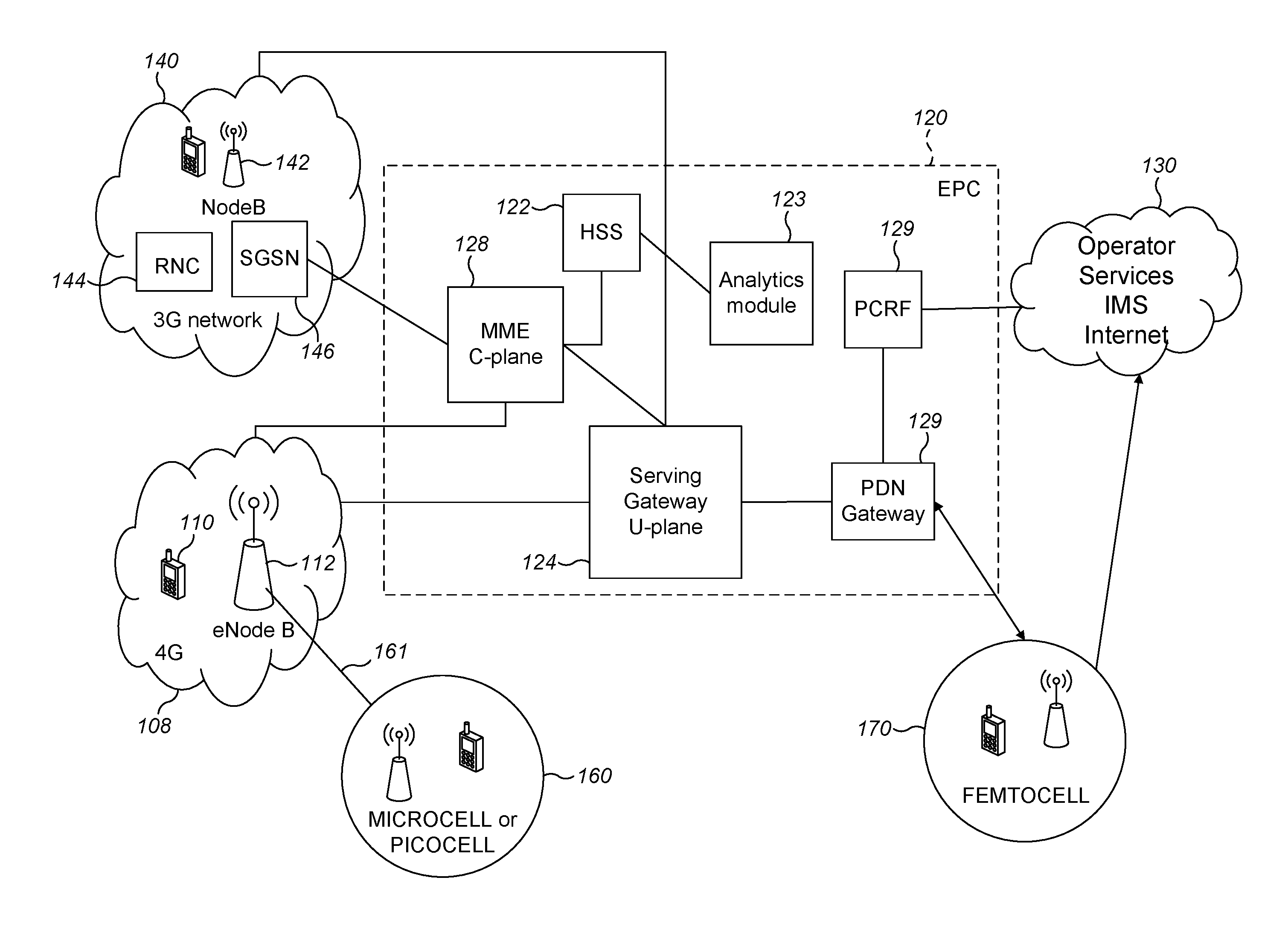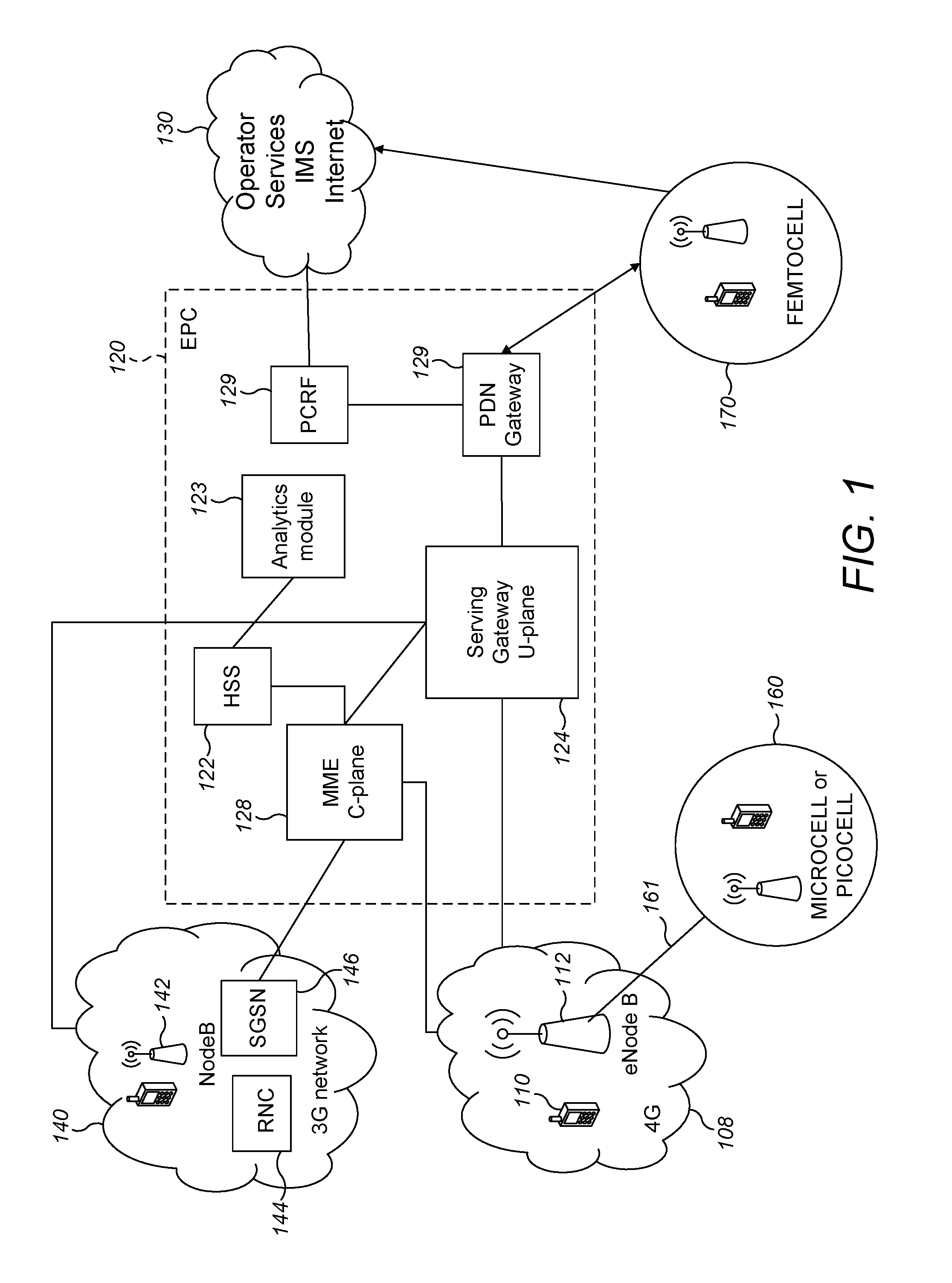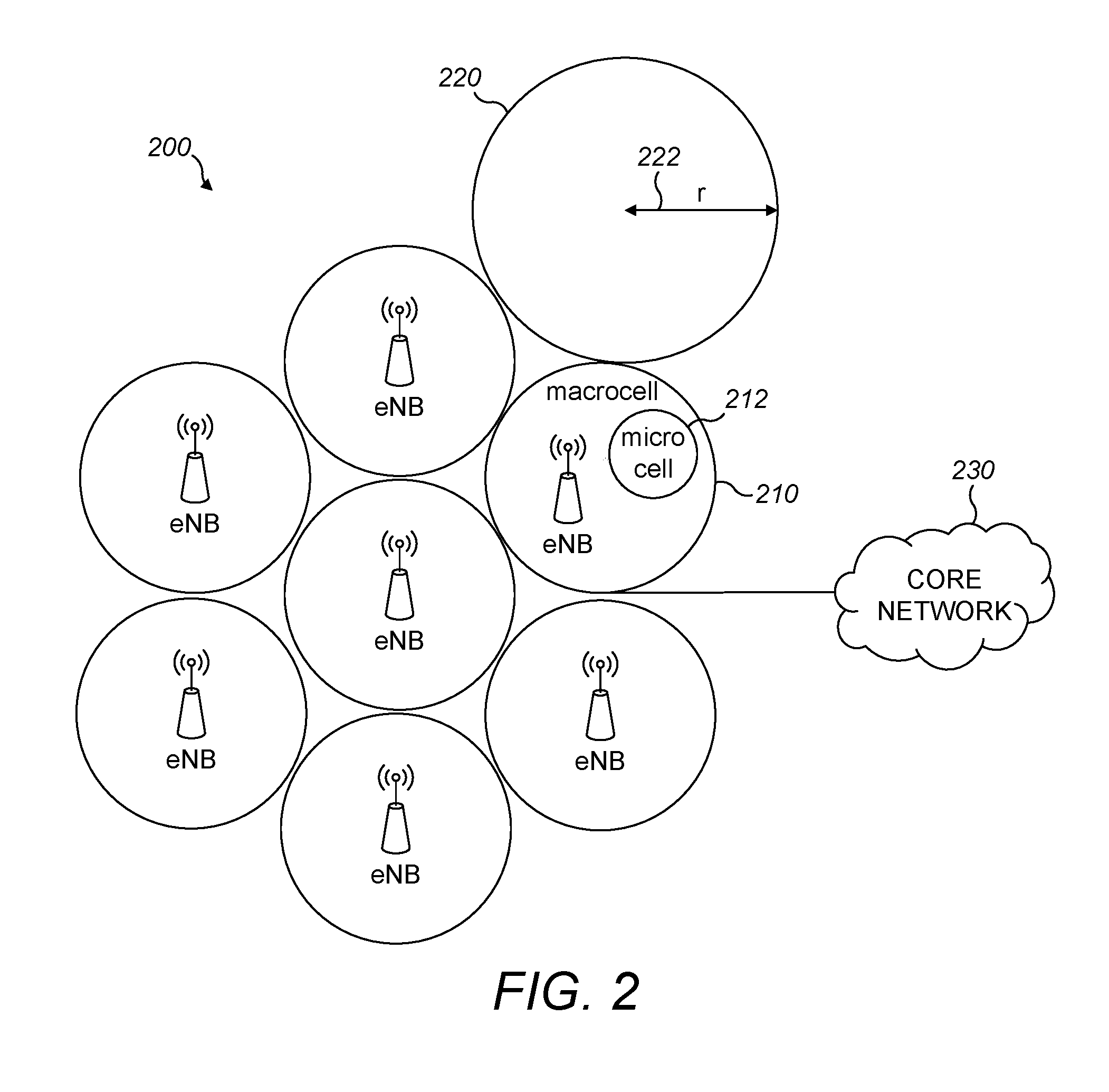Location estimation in a communication network
a communication network and location estimation technology, applied in the field of location estimation in a communication network, can solve the problems of limited accuracy of the method of location estimation, and achieve the effect of accurate static characteristic location estimation, computational efficiency and memory efficiency
- Summary
- Abstract
- Description
- Claims
- Application Information
AI Technical Summary
Benefits of technology
Problems solved by technology
Method used
Image
Examples
first embodiment
[0089]FIG. 6 is a flow chart that schematically illustrates a method of static location estimation by an analytics engine according to a The method starts at a process element 610 and proceeds to a process element 620, where the system accesses network data relating to eNodeB coverage areas (cells and sectors) including cell IDs, cell radii and cell centroids. Each coverage area (cell or sector) is uniquely identifiable for a given PLMN based upon the cell ID. Next, at process element 630, the analytics engine accesses the HSS (122) and / or other network sources of UE location events, such as the CDF and CGF and UE History Information. Once the UE location event observations have been obtained, the process proceeds to a process element 650, where the cell (or sector or coverage area) having the highest number of observed events in a given time period is identified as the highest incidence cell. When the time period corresponds to an overnight period, this relates to determining a st...
second embodiment
[0097]FIG. 8 is a flow chart that schematically illustrates a method of static location estimation by the analytics module according to a Process elements 810, 820, 830 and 840 of FIG. 8 correspond respectively to process elements 610, 620, 630 and 640 of the flow chart of FIG. 6 and the same processes are performed as described above in relation to FIG. 6. However, the process of FIG. 8 differs from that in FIG. 6, because at process element 850 a calculation different from the threshold comparison of FIG. 6 process element 650 is performed. In particular, at process element 850, the location event data for the UE is analysed to identify all cells, other than the highest incidence cell identified at process element 840, having one or more events in a given time period. At least a subset, comprising an integer number N of these identified cells is selected for inclusion in the refined static location calculation. For example, the subset of N cells having at least some overlap in co...
PUM
 Login to View More
Login to View More Abstract
Description
Claims
Application Information
 Login to View More
Login to View More - R&D
- Intellectual Property
- Life Sciences
- Materials
- Tech Scout
- Unparalleled Data Quality
- Higher Quality Content
- 60% Fewer Hallucinations
Browse by: Latest US Patents, China's latest patents, Technical Efficacy Thesaurus, Application Domain, Technology Topic, Popular Technical Reports.
© 2025 PatSnap. All rights reserved.Legal|Privacy policy|Modern Slavery Act Transparency Statement|Sitemap|About US| Contact US: help@patsnap.com



